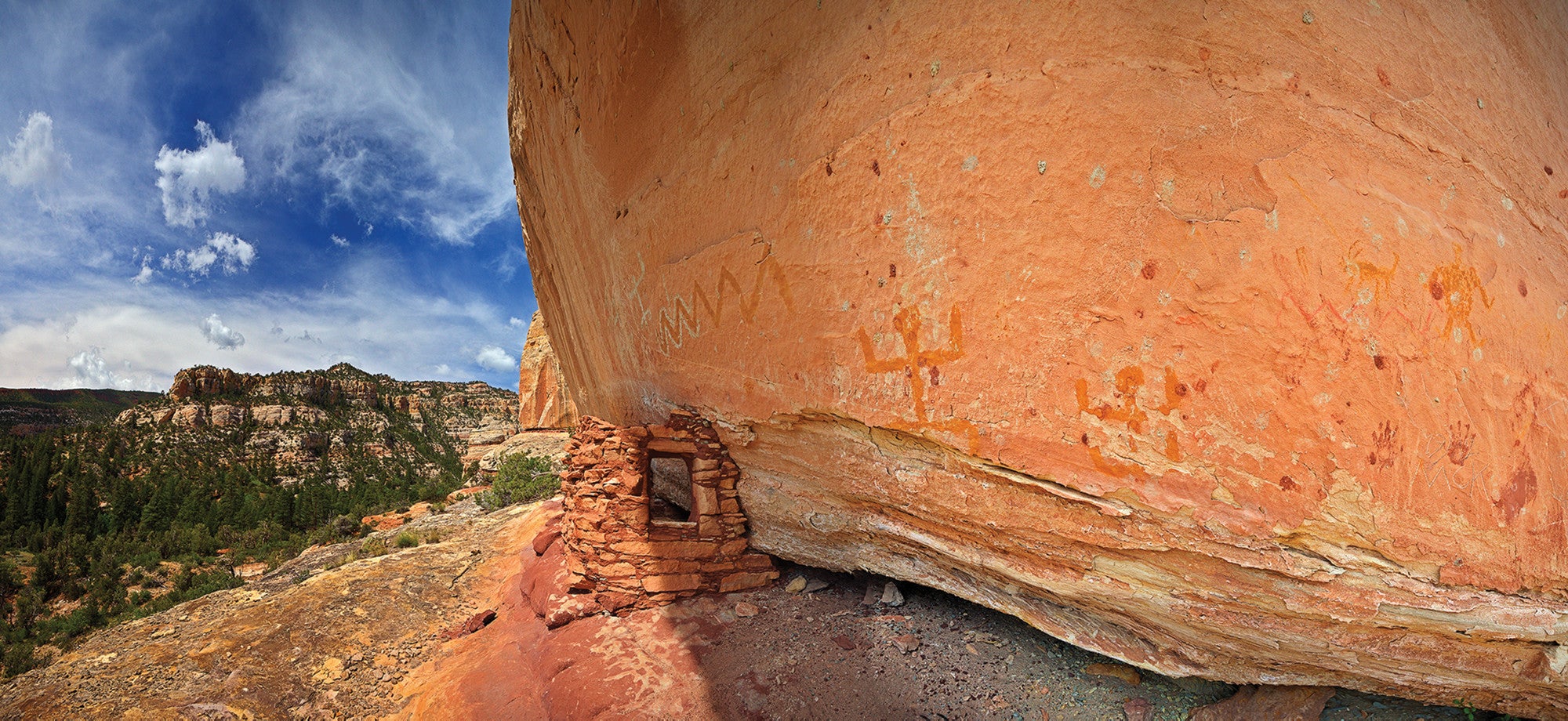The Battle Over America's Wilderness

'Tim Peterson'
For less than a year, Utah’s Bears Ears National Monument described a 1.3 million-acre swath of canyons brimming with the highest density of ancient native artifacts in the country.
Last December, by order of President Donald Trump on the recommendation of Interior Secretary Ryan Zinke, Bears Ears was replaced with two monuments with a combined area some 85 percent smaller than the original. The remainders returned to their designations as BLM or U.S. Forest Service land, making them eligible for new energy and road development. (Nearby, 1.9 million-acre Grand Staircase-Escalante National Monument was diminished by about half).
A reduction of this size is unprecedented in our history (it faces legal challenges), and the rhetoric around the issue has been heated, given that the monument status didn’t change existing uses for grazing, mining, logging, oil and gas leases, hunting, or off-highway vehicle use. It didn’t increase the total federal land holding, or force private property owners off their land. It did, however, enhance protection from future development. That’s what national monuments do, and as a result, they direct a lot of visitors—and their money—to a place worth seeing.
But what made Bears Ears and Escalante so objectionable to some was partly their respective sizes. Since national monuments came into existence under the Antiquities Act of 1906, there has been debate about their scope. Many Western members of Congress have advocated for smaller tracts that define areas of specific cultural significance, arguing that large areas of protected land stymie local control. Of course, that didn’t stop President Theodore Roosevelt from designating the Grand Canyon a national monument in 1908, when Congress lacked the will to name it a national park.
There was grumbling then, too, with detractors arguing that any hindrance on mineral extraction would be bad for Arizona’s economy. (It’s worth noting that the Grand Canyon generated $900 million for the local economy in 2016.)
The size issue has also prompted new legislation to put limits on the Antiquities Act. If approved, it would restrict the president from designating monuments larger than 85,000 acres, while requiring voted consent from all levels of government. But, in this case, size isn’t all that matters.
The attack on monuments comes amid a broader effort to undermine protections for public lands—or eliminate them outright. Despite a long history of bipartisan support for public lands, a plank in the GOP’s 2016 platform offered a directive to reduce federal acreage. In January 2017, Utah Republicans introduced a bill to transfer 3 million acres of land to state control. Days later, the backlash from users of the outdoors stopped it cold. In 2016, Zinke, then a Congressional representative, resigned his position as a delegate to the Republican National Convention over this issue, calling it too divisive.
Still, there’s an ongoing argument to give land back to states, even if the land in question was never owned by the states that contain it, but rather by the American public. Prior to designation as a monument, the Grand Canyon—and much of the Southwest—was held by a federal agency responsible for nearly all the land that became the United States after the 1848 Treaty of Guadalupe Hidalgo ended the Mexican-American War (and well before the establishment of the State of Arizona in 1912). A similar story played out across the West.
Unsurprisingly, Americans don’t want to give up what’s already theirs. Year after year, we continue to show strong support for public land protection. But while visitation continues to climb across all designations of federal land, funding continues to shrink, straining infrastructure.
One of the key arguments against public land protection is that America needs extractive industries to boost the economy. But 90 percent of BLM land is already eligible for energy development, mining, and drilling. That logic suffered another blow last year when Congress, as part of the Outdoor REC Act, recognized the contributions of the outdoor industry to the gross domestic product for the first time ($887 billion in 2016, according to the Outdoor Industry Association—far outpacing mining’s $261 billion contribution).
Ultimately, the courts will decide if the changes to Bears Ears and Grand Staircase-Escalante will stand. The results will have far-reaching consequences. Do presidents have the power to undo land protections established by their predecessors? Will that leave some controversial locations bouncing between competing visions of how to manage them?
Either way, what happens will be big news because, thanks
to generations of advocates, lawmakers, and yes, hikers, our lands occupy not only a place on our national map, but in our American identity.